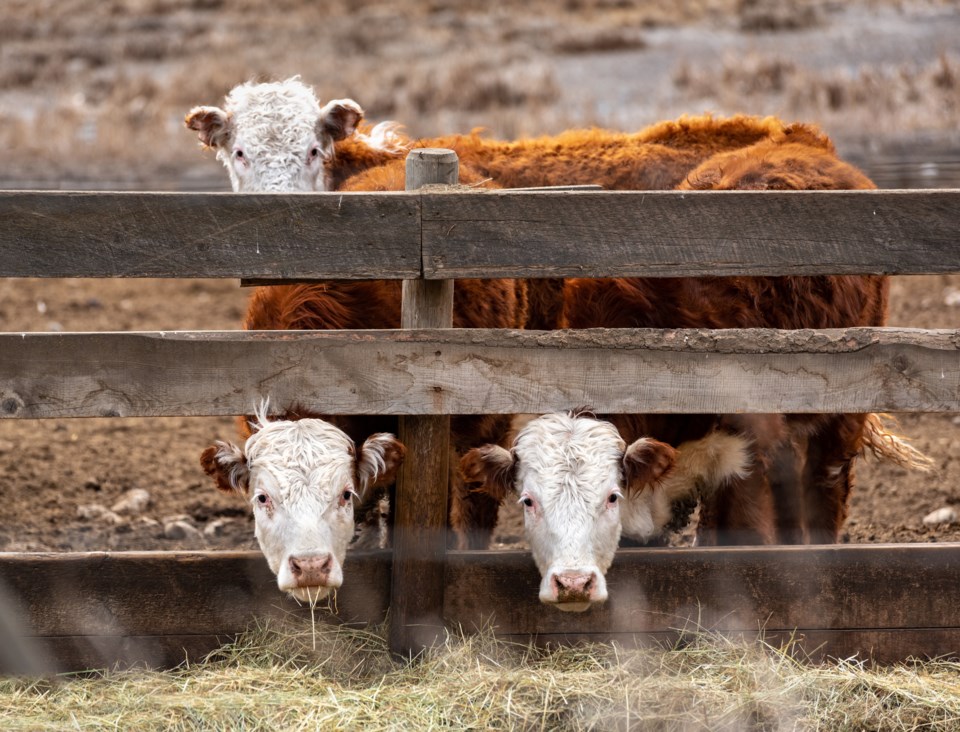Cattle producers are coping with a significant drought this year that is severe and widespread across the entire province
Beef producers in British Columbia, facing heat waves, drought and wildfires, are working with the provincial government to get the help they need.
It includes seeking federal approval for funding under the AgriRecovery program, said Kevin Boon, general manager for the B.C. Cattlemen’s Association. Provincial officials have also provided $150,000 to help beef producers find feed in nearby Washington state, he said.
“B.C. is already being recognized by the federal government that we’re in a different situation than the Prairies. We’re in a much more severe drought situation because it doesn’t have a break anywhere, and we’re at drought levels four and five everywhere.”
Five is the highest level and marks the point when creeks are dry, said Boon during an interview Aug. 11. Most of B.C.’s water basins were at level four or five as of Aug. 10, said a provincial statement.
Declining pastures and high hay prices are forcing beef producers to consider selling much of their herds. Boon expected temperatures could soar as high as 35 to 40 C after Environment Canada issued several heat warnings for the province.
Those conditions have drained groundwater sources, he said. Irrigation that producers rely on to grow feed during periods of low rainfall is also facing more provincial restrictions aimed at maintaining fish populations, said Boon.
“And so, the fish orders take precedence over our ability or need for putting water on the hay to grow feed. There is a strong possibility that some of these producers are going to lose a cut of hay at the end here, or a reduction in the yield on it because they haven’t been able to irrigate as much as they normally would.”
The B.C. Wildfire Service listed 379 active wildfires in B.C. as of Aug. 13, with 11 considered to be wildfires of note. Boon said some ranchers face losing cattle, fences and other infrastructure, even as the industry is working to replace about 1,500 kilometres of fences lost to wildfires in 2021, which will likely cost up to $38 million.
However, he didn’t expect this year’s fence damage will be as severe as it was two years ago “just because of the areas they are in, but we’re not done yet. And you know, it depends on the intensity of the fires.”
The challenges faced this year by farmers and ranchers prompted the B.C. government to formally submit a request to federal officials for AgriRecovery funding. Producers in 2021 were eligible for up to $20 million through AgriRecovery after being hit by wildfires for the third time in five years.
Because of a significant need for feed, “many ranchers and producers are facing difficult decisions,” said a statement July 14 by the Ministry of Agriculture and Food. “Unfortunately, the feed shortage is not unique to British Columbia and is being felt throughout Western Canada,” it said.
“The ministry is working closely with partners on the ground, such as the B.C. Cattlemen’s Association and B.C. Dairy, to identify additional sources of feed. If any additional feed is secured, it will be distributed to producers.”
Programs such as AgriRecovery won’t address the feed problem, prompting the provincial government to provide $150,000 early on to help beef producers, said Boon. It not only covered finding sources of hay and matching them with producers, but also the expense of doing nutrient testing on feed, he said.
“And we found an ample supply of hay south of the border in Washington, for sure, that is at a really good competitive price… they had an abundance of hay because they’ve not been able to ship their hay into Asia to meet those export markets for some reason, and so we’ve gotten a supply now that’s there.”
However, the Washington feed will likely be expensive to ship to areas such as northern B.C. because of the longer distances, said Boon.
He added he hopes trucking companies don’t increase freight rates to take advantage of the situation.


